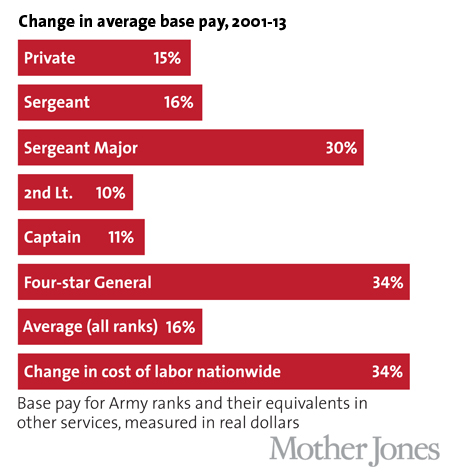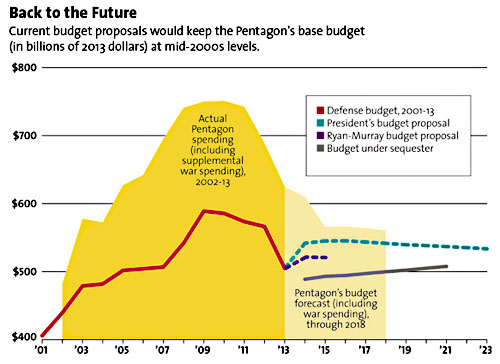
<a href="http://www.flickr.com/photos/presidioofmonterey/6077560325/sizes/z/">Presidio of Monterey</a>/Flickr
Yesterday, Secretary of Defense Chuck Hagel announced major cuts to the Pentagon budget. If implemented, the proposal would shrink the Army to its smallest size since World War II. Tighter budgets, Hagel said, require a smaller force, though he maintained that a downsized military still “would be capable of decisively defeating aggression in one major combat theater—as it must be—while also defending the homeland and supporting air and naval forces engaged in another theater against an adversary.”
The budget also targets personnel costs, with cuts to soldiers’ housing allowances and commissary subsidies, as well as potential increases in health-care fees for the family of active service members. Hagel also proposed a one-percent pay raise in 2015, though pay for flag officers and generals would be frozen at current levels.
Those cuts take a small swipe at what’s known as “brass creep”—the swelling ranks of generals and admirals who earn high salaries and retire with cushy pensions. Congress approved multiple raises during the Iraq and Afghanistan wars, but a look at base pay rates (what soldiers earn before add-ons like housing allowances and combat pay) shows that the wartime wages didn’t trickle down the chain of command.

Any cuts that directly affect the rank-and-file (not to mention retired service members) will be unpopular. Yet they address the reality that even though three-quarters of the Pentagon’s budget goes to hardware, contractors, and operations, an increasing amount is spent on the troops. While the number of Americans in uniform increased 3 percent during the past decade, the annual cost per person doubled, to around $115,000.
Though these Pentagon cuts are being described as major, Hagel and the president’s proposed future budgets still exceed the limits put on the military by the suspended sequester cuts—which already kept defense spending at the level it was at during the height of the war in Iraq. The United States is in no danger of being knocked off its perch as the world’s biggest military spender in the near future. There’s much more on the battle to rein in the size of the post-9/11 military here.









